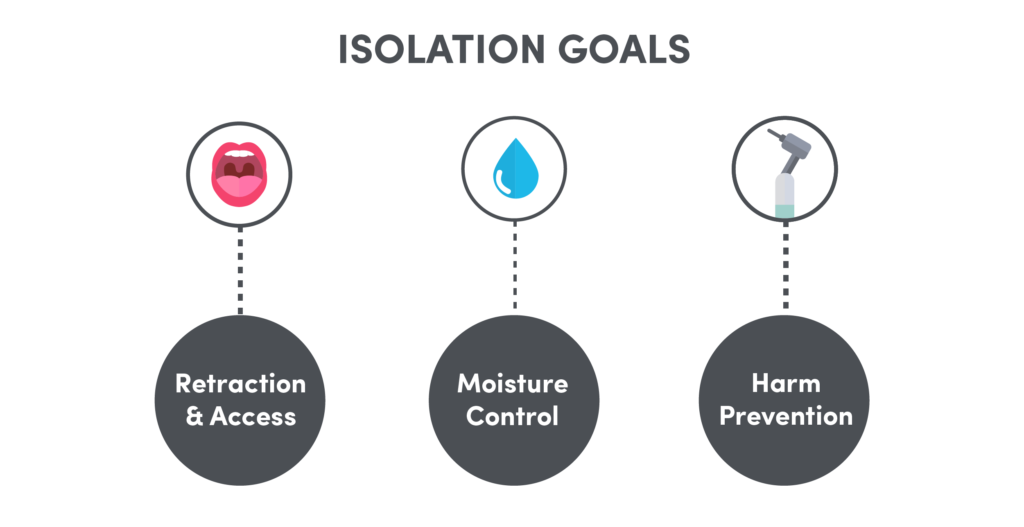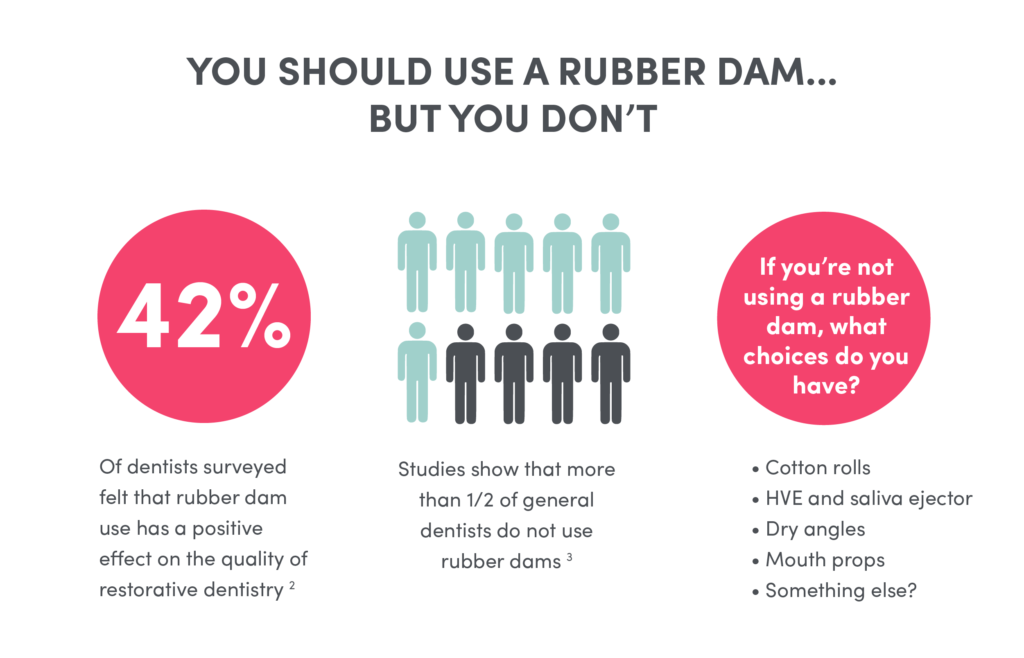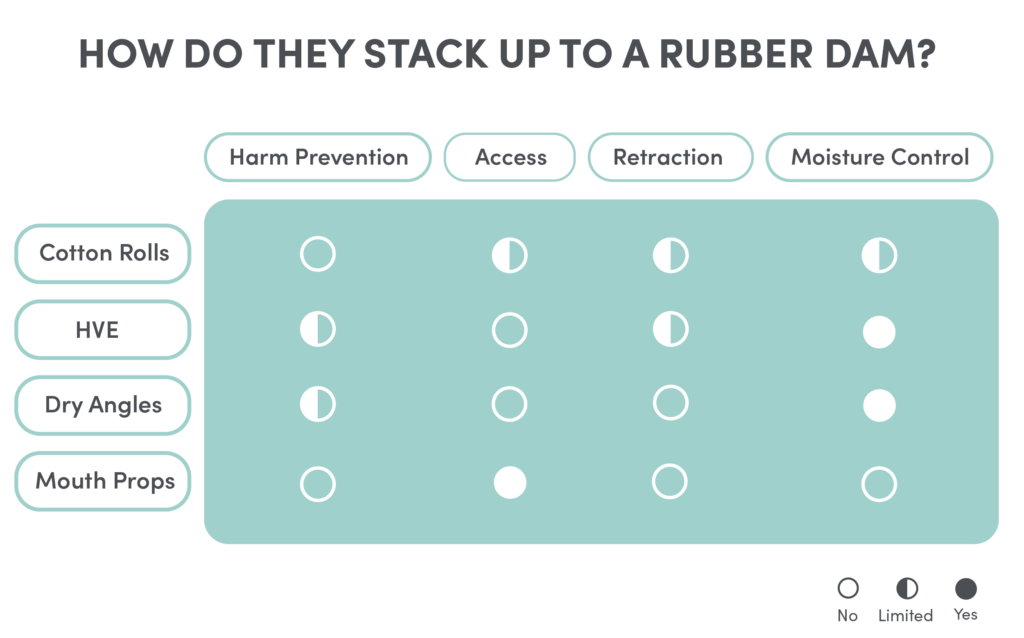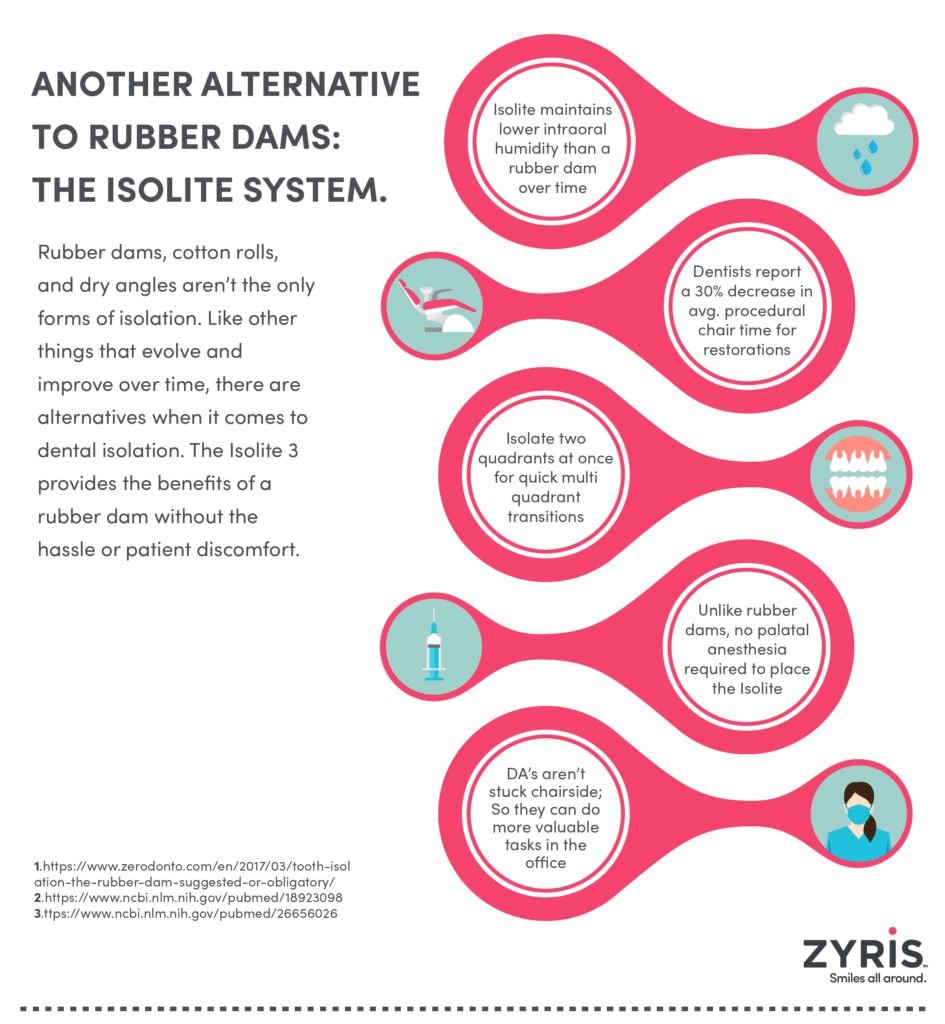Adequate control over the operating field is imperative for the success of restorative procedures. The isolation system chosen by the dentist should sequester a section of the mouth from moisture, such as saliva and blood, as well as to provide clear visibility and access to the area away from sensitive tissues, such as the gums, cheeks, and tongue.
The Standard of Care: “Tooth isolation using the dental dam is the standard of care; it is integral and essential for any nonsurgical endodontic treatment.” – AAE Position Statement1
Presumed Standard of Care ≠ Actual Clinical Practice:
The 42 percent of dentists surveyed felt that rubber dam use has an effect on the quality of restorative dentistry. However, general dentists in the United States continue to ignore the rubber dam for many restorative and some endodontic procedures.2
You know you should use the rubber dam, but 53% of you are not because it is inconvenient.3





1 https://www.aae.org/specialty/wp-content/uploads/sites/2/2017/06/dentaldamstatement.pdf
2 https://www.ncbi.nlm.nih.gov/pubmed/18923098
3 https://www.ncbi.nlm.nih.gov/pubmed/18923098
 (800) 560-6066
(800) 560-6066
